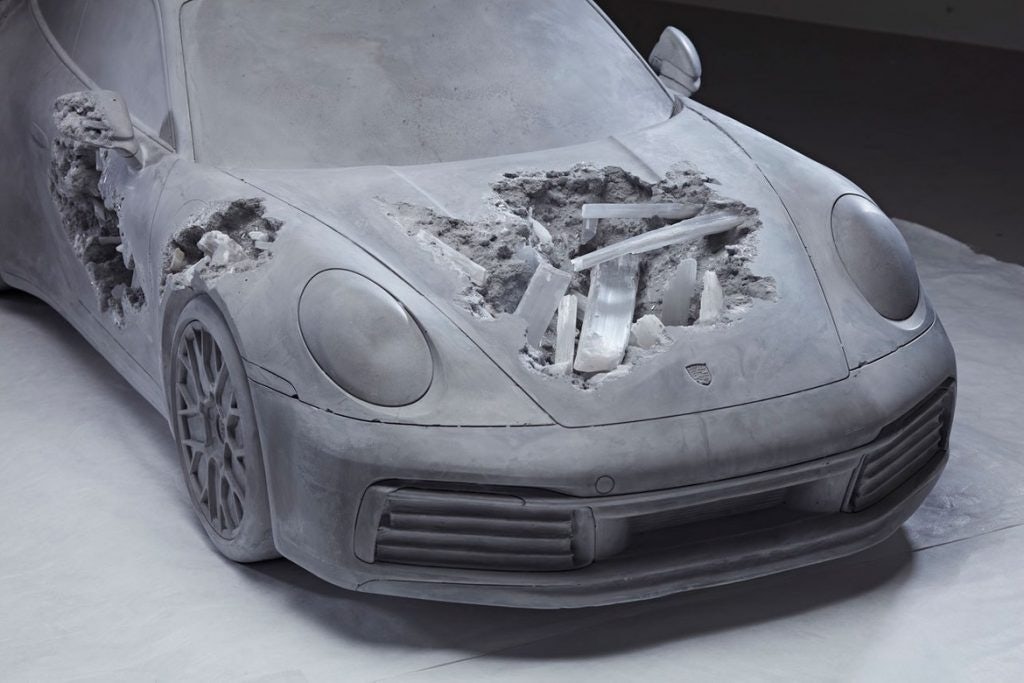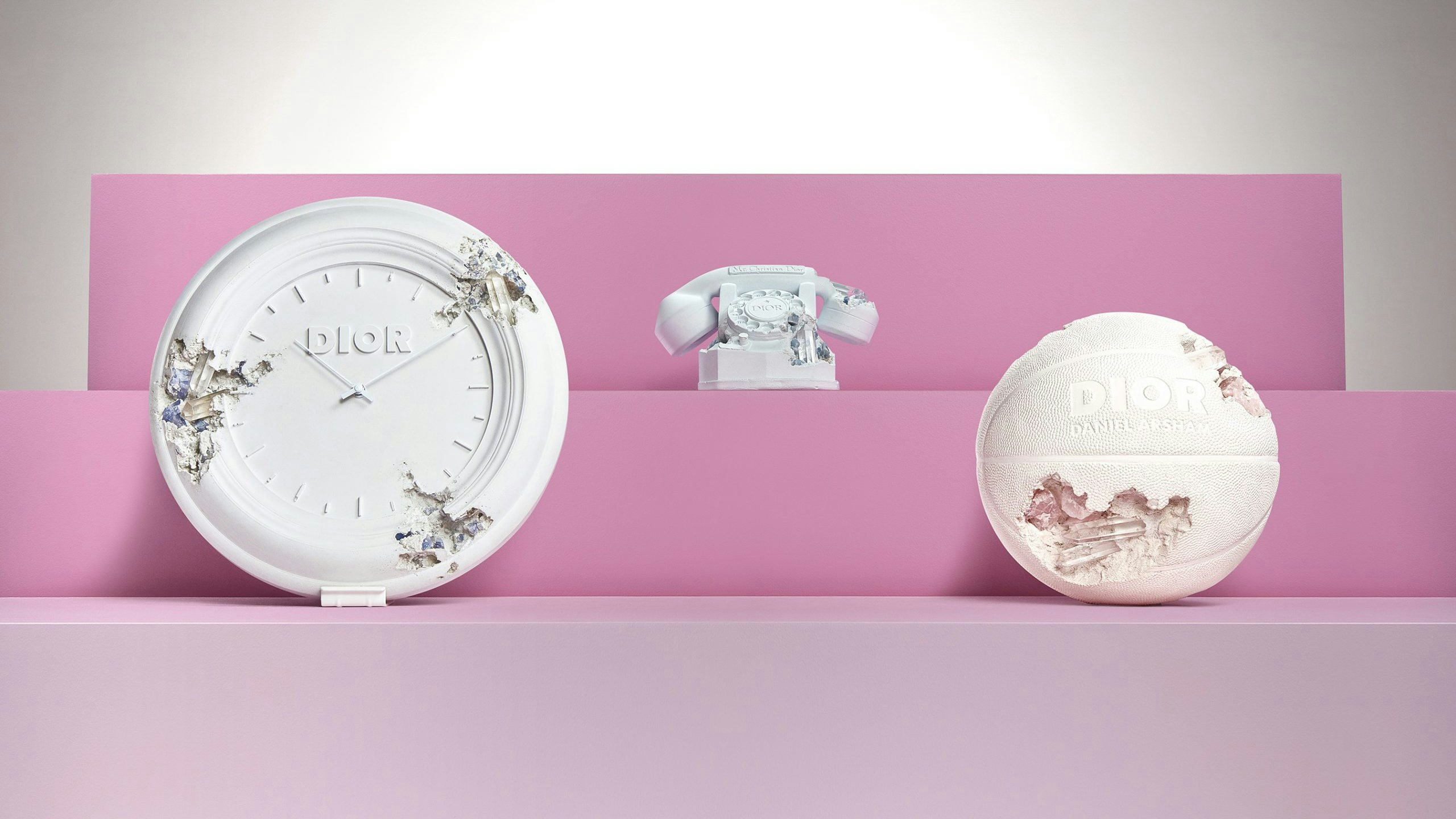Few understand what it means to merge two worlds better than Daniel Arsham. The New York-based artist, best known for turning everyday objects into archaeological discoveries, has built a career by blurring the boundaries between art, luxury, and popular culture. He's created weathered, crystallized looks for Dior, carved eroded sculptures for Porsche, and even put a dystopian spin on cartoon characters like Mickey Mouse and Pokémon.
By reimagining these contemporary icons, Arsham has managed to engage audiences outside of traditional art circles. This includes an ever-important class of young Chinese consumers who are not only driving luxury’s rebound and dominating auction sales, but also redefining the industry with their appetite for pop and street culture. Gone are the days of collecting Ming dynasty vases; now, Arsham’s "Future Relics" and KAWS are all the rage.
On April 8, Jing Daily partnered with the auction house Sotheby’s to examine this new era of luxury. The webinar, titled "How Popular Culture Has Redefined Luxury in China," was moderated by Enrique Menendez, Editor-in-Chief of Jing Daily, and featured Arsham as a panelist, along with Ted Gushue, Editor of Porsche’s official magazine, Type 7, and Yuki Terase, Head of Contemporary Art, Sotheby’s Asia.
Together, the group discussed the goldmine of pop culture and luxury collabs, how the pandemic has altered consumer behaviors, and where China comes into play. For a clearer view of this market, here are five key questions they answered.
Is the intersection of popular culture and luxury a paradox?#
Menendez opened the discussion with a quote from the late pop artist Keith Haring: “The decision is basically, is art for an educated few, or is art for all people of the time.” But luxury, which traditionally presents itself as exclusionary and elitist, runs against this principle. So, how can the two be reconciled?
“From my perception, luxury has not necessarily been always about price,” Arsham said. “For me, it’s really about two things: the level of craft and scarcity. Once you combine those two things together, you have something that’s desirable.”
The trajectory of sneakers shows just how much luxury’s definition has changed. Terase shared that when Japanese fashion designer Nigo insisted his Adidas Stan Smith shoes be included in a collection auction in 2014, it stirred a debate about whether a storied auction house like Sotheby's should consider the footwear category. But today, there’s been no hesitation to venture beyond the fine arts given the interest from serious collectors.
Can global consumers connect to popular culture from a different country?#
While pop culture-themed products often bank on nostalgia for success, Gushue brought up the question: "What if customers don’t share this cultural touchpoint?" Arsham responded by pointing out Porsche’s popularity in China, despite the car not being sold there until 2002. “When these objects become so indelible in the global culture, whether it’s through film or other means, people are familiar with [them],” he said.

Chinese consumers are also good at doing their homework. “The speed of their learning is just incredible,” Terase added. “I have a lot of clients who had not bought a single piece of art three years ago. And now, they tell me what I should be looking at in the market.”
Who is splurging on these collaborations?#
Rather than curtailing art spending, the pandemic has created pent-up demand and expedited the rise of a new generation of bidders. Sotheby’s, for one, welcomed “an overwhelming number of new clients from China” last year, with the majority of them being under 45 years old. According to Terase, these wealthy buyers typically fall into one of two categories: They are either second or third-generations of Chinese business magnates who have come of age or are self-made entrepreneurs who took their companies public in their 30s.
How have buying habits changed post-pandemic?#
But it’s not just who is spending that’s interesting; it’s how they’re spending. From luxury apparel to fine art, more young consumers are now making major purchases based on pdfs and jpegs rather than seeing the products in person. “Most of [Sotheby’s] Chinese national customers never even see the work beforehand, don’t even come in to have a coffee, and all of a sudden they’ve spent two million on a piece of art that they’ve never met before,” Gushue marveled. “That’s 'Blade Runner' stuff to me.”

How will NFTs shape the future of luxury?#
Although there’s still a lot of uncertainty surrounding non-fungible tokens, the panelists were optimistic about their ability to empower artists. In addition to helping creators recover a portion of their resales, NFTs may also give them more power over self-branding. “No one buys a musician’s new album because of the label that they belong to,” Terase said. “That isn’t the case with the fine arts, where the gallery system and art fairs and auction houses – the platforms and the boxes – were driving forces. Now, this NFT is bringing power back to the artists and creators themselves.”
Ultimately though, Arsham hopes the medium can be used to create something that didn’t exist before. “There’s a lot of potential in smart contracts on the Ethereum blockchain that haven’t been used yet. And when the medium becomes part of the work, this is where it’ll get very interesting.”


